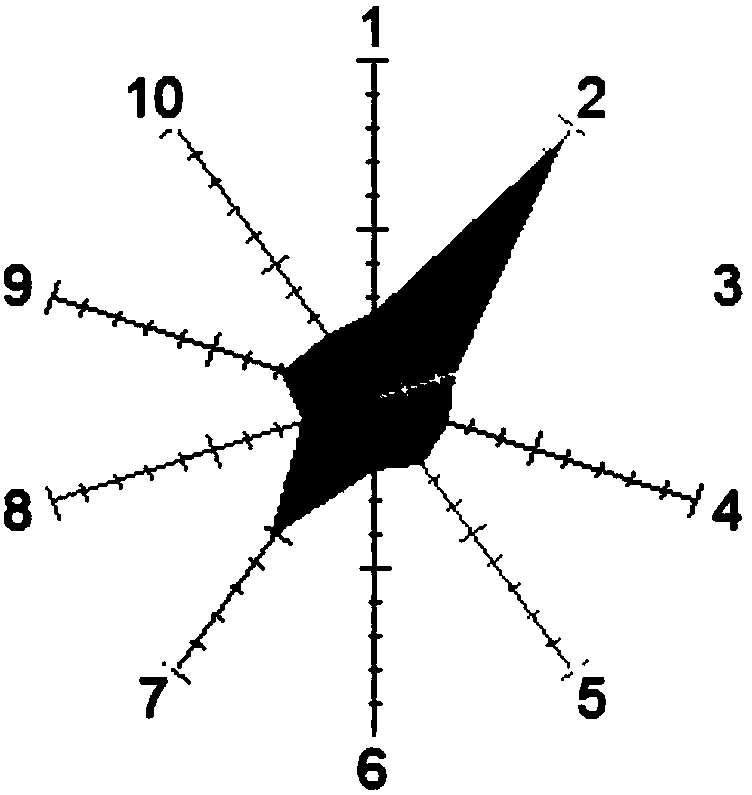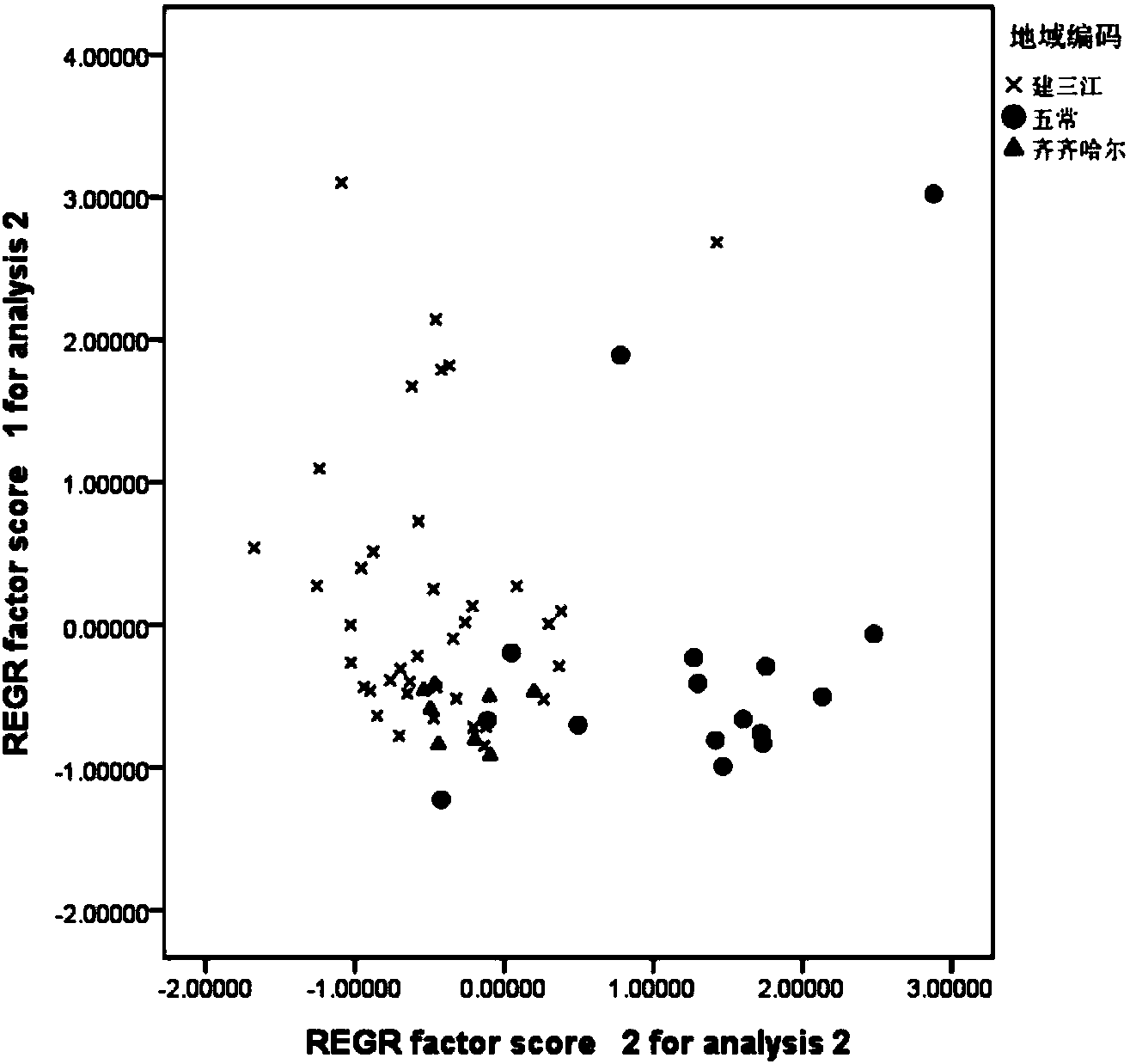Identification method of rice geographical indications and application of identification method of rice geographical indications
A technology of geographical indication and rice, applied in the direction of material resistance, to achieve the effect of safeguarding the interests of farmers, guaranteeing the brand and fast detection
- Summary
- Abstract
- Description
- Claims
- Application Information
AI Technical Summary
Problems solved by technology
Method used
Image
Examples
Embodiment 1
[0036] Example 1 Sample pretreatment and collection of characteristic odor information
[0037] 3 kg of samples were collected from the rice fields of farmers in Wuchang City, Qiqihar, and Jiansanjiang, Heilongjiang Province. A total of 62 rice samples were collected, including 16 in Wuchang City, Heilongjiang, 9 in Qiqihar, and 37 in Jiansanjiang Administration Bureau. The collected rice is hulled and milled, and the precision of the obtained rice is in accordance with the national first-level standard. The milling time is 80s, and it is passed through a 50-mesh sieve to be tested.
[0038] The PEN3-electronic nose produced by the German AIRSENSE company was used to detect the dynamic changes of the smell of rice from different origins. Weigh 30g of rice into a 100mL sealed sample bottle, place it at 30°C for 90min, and then measure it. The measurement time is 60s and the recovery time is 120s. There are 10 odor sensors in the applied electronic nose (see Table 1), and each...
Embodiment 2
[0042] Example 2 Feasibility Analysis of Electronic Nose Technology for Identification of Rice Origin
[0043] The electronic nose is a characterization of the overall information of the volatile components of the sample. Different types of volatile components are measured by different sensors, and the amount of data information is large. It is necessary to combine chemometrics to extract effective data information. Principal component analysis (PCA) was first proposed by PEARSON in 1901, and its principle is to reduce the dimension of a large amount of data. In this embodiment, the software SPSS 20.0 is used to conduct principal component analysis on the measured data, and multiple indicators with certain correlations are combined into a group of unrelated comprehensive indicators to replace the original indicators. Based on the response value of each sensor for PCA analysis, two principal components are extracted. The first principal component mainly synthesizes sensors 1, 2...
Embodiment 3
[0045] Embodiment 3 linear discriminant analysis method establishes discriminant model
[0046] Discriminant analysis is a method to distinguish the type of sample. Discriminant analysis is different from cluster analysis. Discriminant analysis is to divide the known research objects into several categories, and establish a discriminant function according to the properties of the known categories of things on the basis of obtaining various known sample observation data, and then substitute the corresponding indicators of the samples to be classified into the discriminant function. Discriminative classification of samples of unknown sample type is then performed.
[0047] From the results of principal component analysis, it can be seen that the electronic nose fingerprint analysis technology is feasible to discriminate the origin of rice. In order to further understand the results of the gas sensor on the discrimination of rice origin, 50 samples were randomly selected to est...
PUM
 Login to View More
Login to View More Abstract
Description
Claims
Application Information
 Login to View More
Login to View More - R&D
- Intellectual Property
- Life Sciences
- Materials
- Tech Scout
- Unparalleled Data Quality
- Higher Quality Content
- 60% Fewer Hallucinations
Browse by: Latest US Patents, China's latest patents, Technical Efficacy Thesaurus, Application Domain, Technology Topic, Popular Technical Reports.
© 2025 PatSnap. All rights reserved.Legal|Privacy policy|Modern Slavery Act Transparency Statement|Sitemap|About US| Contact US: help@patsnap.com



